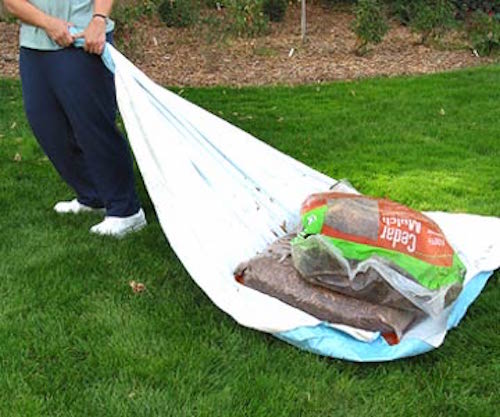The majority of us plant backyard vegetable gardens to grow our own healthy food, to teach our children about growing food or as part of adopting a healthier lifestyle.
Some of us gardeners are looking for a healthy, outdoor hobby to incorporate into the daily life, others are looking for ways to reduce the chemicals their family consumes, and some want to lower their environmental impact by growing their own food at home.
Whatever the reason you choose to plant your backyard garden, you most likely want it to look good and enhance rather than take away from the overall visual appeal of your yard.
If you have experience with gardens, you probably know that vegetable gardens are often more functional than fashionable and not every garden It looks like something you would want your people to see during outdoor dinner parties.
It can be particularly hard to keep your fruits and veggies looking healthy and happy during times of drought since these conditions can lead to dry leaves, dying plants, and plants that are prone to disease.
But with the right designing, steady maintenance and an eye towards design, you can grow fruits and vegetables in a garden that will feed your family and impress your people.
Here are 9 ideas to help you keep your vegetable garden attractive and producing well…
9. Don’t plant in rows.
Rows may be the classical garden design that most of think we have to use, but there are few vegetables that actually need to grow in these single-file lines.
the garden will be much more attractive if you stay away from rows, other than for corn and similar plants that do best when grown in this manner.
8. Use raised garden beds.
Raised beds give your garden a cleaner look, make it more manageable and allow you to have nice walkways between your plants.
This will help stabilize your plants into neat, small boxes and allow you to come up with an attractive garden plan to better enhance its visual appeal.
Raised garden beds also help you to use the soil of your choice and can allow you to have more attractive root vegetables at harvest time.
7. Treat it like a flowerbed.
When designing your garden, create a design just like you would in a border, a flowerbed or an island.
For instance, plant taller items in back, moderate-sized plants in the middle and shorter plants towards the front.
If you are planting in raised beds that can be seen on all sides, place your tallest plants in the middle and work your way down to your shortest plants along the edge.
6. Plan before you plant.
randomly planted gardens are not always appealing, but that is what usually happens when you head to your local garden center and pick plants or seeds without a plan.
begin by making a list of vegetables and fruits your family eats and that you would like to grow.
Then do a little research to find out which plants on your list are easiest to grow in your area.
This will help guarantee that you select plants that are more likely to look appealing and healthy after you plant them
5. Choose healthy plants.
One of the recommended ways to avoid disease and have attractive plants in your garden is to do your best to only bring home healthy plants.
Check for discolored leaves, fungus, aphids and don’t be afraid to take the plant out of the pot (gently) to check the health of the root system.
If you are starting from seeds, make sure you purchase them from a reputable company.
4. Use fully composted yard waste
Not all materials in a compost pile decompose at the same rate. several materials may have decadent sufficiently to be in the garden, while others have not.
Thorough composting produces high temperatures for extended lengths of time, which actually damages any pathogens in the material.
Infected plant debris that has not tolerated this process will reintroduce potential diseases into your garden.
If you are not certain of the situations of your compost pile, you should avoid using yard wastes as mulch under sensitive plants and avoid including possibly infected debris in your pile
3.Examine plants carefully before buying
The best way to stop the diseases in your garden is to avoid introducing it in the first place. Getting a disease with a new plant is not the kind of bonus that any of us wants.
One of the toughest things to learn is what a healthy plant should look like, making it hard to know if the one you want is sick.
It is an excellent idea to collect a few books, magazines, and catalogs that show what a healthy specimen looks like.
stop taking home a plant with dead spots, rotted stems, or insects. These problems can easily stretch to your plants and are sometimes hard to get rid of once settled.
